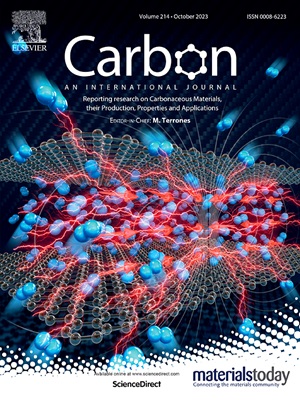Facile one-pot synthesis of metal and non-metal doped g-C3N4 photocatalyst for rapid acetaminophen remediation
IF 10.5
2区 材料科学
Q1 CHEMISTRY, PHYSICAL
引用次数: 0
Abstract
In this study, porous diatomic metal and nonmetal doped graphitic carbon nitride (g-C3N4) were synthesized through a one-pot calcination method and used for acetaminophen (ACM) remediation. TeSC3N4 and SrSC3N4, prepared by doping sulfur, tellurium and strontium, showed enhanced photodegradation of acetaminophen compared to pristine g-C3N4 and SC3N4. Among these materials, TeSC3N4-2 exhibited a degradation rate of 99 %, significantly higher than SrSC3N4-2, which showed 95 % degradation in 70 min under visible light irradiation. The reaction kinetics for both materials followed pseudo-first-order model (TeSC3N4-2, R2 = 0.989, 0.0396 min−1, t1/2 = ln2/k 17.5 min, and SrSC3N4-2, R2 = 0.988, 0.0332 min−1, t1/2 = ln2/k 20.8 min). TeSC3N4-2 and SrSC3N4-2 were also used for the degradation of multiple pollutants, and the results showed that methyl orange and congo red were degraded up to 99 %. TOC analysis revealed 95 % removal by TeSC3N4-2 and 88 % by SrSC3N4-2. Several scavengers were utilized to determine the reactive species in the ACM degradation process, and O2•- was found to be the main reactive species. Liquid chromatography mass spectrometry (LC-MS) was employed to monitor drug intermediate formation and degradation pathways, providing detailed insights into the degradation process. This study emphasized the high efficiency of catalysts for multiple pollutants degradation and their environmental friendliness, underscoring their potential applications in eco-friendly water treatment.
一锅合成金属与非金属掺杂g-C3N4光催化剂对乙酰氨基酚的快速修复
本研究通过一锅烧结法合成了多孔双原子金属和非金属掺杂石墨氮化碳(g-C3N4),并将其用于对乙酰氨基酚(ACM)的修复。由硫、碲和锶掺杂制备的TeSC3N4和SrSC3N4对乙酰氨基酚的光降解能力比原始g-C3N4和SC3N4强。其中,TeSC3N4-2的降解率为99%,明显高于SrSC3N4-2,后者在可见光照射下70 min降解率为95%。两种材料的反应动力学均符合准一阶模型(TeSC3N4-2, R2 = 0.989, 0.0396 min−1,t1/2 = ln2/k 17.5 min; SrSC3N4-2, R2 = 0.988, 0.0332 min−1,t1/2 = ln2/k 20.8 min)。TeSC3N4-2和SrSC3N4-2也用于多种污染物的降解,结果表明甲基橙和刚果红的降解率高达99%。TOC分析显示,TeSC3N4-2的去除率为95%,SrSC3N4-2的去除率为88%。利用几种清除剂测定了ACM降解过程中的活性物质,发现O2•-是主要的活性物质。采用液相色谱-质谱法(LC-MS)监测药物中间体的形成和降解途径,为降解过程提供详细的见解。本研究强调了催化剂对多种污染物的高效降解和环境友好性,强调了其在生态水处理中的潜在应用。
本文章由计算机程序翻译,如有差异,请以英文原文为准。
求助全文
约1分钟内获得全文
求助全文
来源期刊

Carbon
工程技术-材料科学:综合
CiteScore
20.80
自引率
7.30%
发文量
0
审稿时长
23 days
期刊介绍:
The journal Carbon is an international multidisciplinary forum for communicating scientific advances in the field of carbon materials. It reports new findings related to the formation, structure, properties, behaviors, and technological applications of carbons. Carbons are a broad class of ordered or disordered solid phases composed primarily of elemental carbon, including but not limited to carbon black, carbon fibers and filaments, carbon nanotubes, diamond and diamond-like carbon, fullerenes, glassy carbon, graphite, graphene, graphene-oxide, porous carbons, pyrolytic carbon, and other sp2 and non-sp2 hybridized carbon systems. Carbon is the companion title to the open access journal Carbon Trends. Relevant application areas for carbon materials include biology and medicine, catalysis, electronic, optoelectronic, spintronic, high-frequency, and photonic devices, energy storage and conversion systems, environmental applications and water treatment, smart materials and systems, and structural and thermal applications.
 求助内容:
求助内容: 应助结果提醒方式:
应助结果提醒方式:


